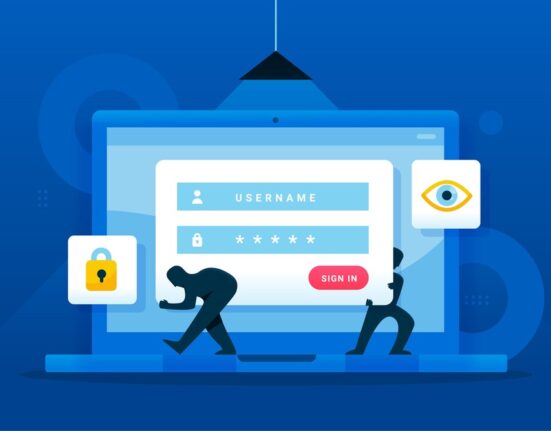A good logo will not only make your business stand out, but it will also sell your brand, communicate to your audience, and give it proper recognition. Oftentimes, business owners make light of their brand logo, which is a big no-no.
When picking your logo, you must be very intentional because your customers will be interacting with it a lot. A logo may seem small, but you should be able to tell a story with it. After all, your logo will serve as the face of your brand. With just a glance, your logo should introduce your business to the viewer.
Some startups and small business owners think that exceptional logos are for big brands. They settle for something shabby with hopes of rebranding when they become big. They forget that a good logo can help their business from scratch. Moreover, changing logos can be risky. Imagine having to reintroduce your business to your customers.
As you begin designing your logo, there are some mistakes you should avoid for the best results.
Logo Making Tips You Should Follow
1. Avoid Overly Complex Logos
Close your eyes for a few seconds and scan through the logo designs of the best brands in the world. Now how many of them have overly complex logos? I can bet that most of them have simple yet unique logo designs.
Avoid having layers of complex designs on your logo. You may think that a complex logo style will showcase your brand more. But simple logo ideas can do much better. It can transform your brand for the better.
The thing with a complex logo is that it makes it difficult for the mind to memorize. People don’t want to look at a logo that makes their minds process too much information. You want your logo to be easily recognized by your audience.
2. Avoid Using the Wrong Fonts
When thinking of logo design ideas, the font should be considered important. Fonts are not just representations of alphabets. They are more.
Fonts have characters and personalities. When you look at a font, see it as a living, breathing being. The font of your logo can be said to be the voice of the logo style. It speaks to the viewer.
To get acquainted with font styles, carry out in-depth research and check the fonts of top brands in the same industry as yours. The font for designer brand logos should not be similar to programming brands.
Designer brand logos should speak of class, elegance, and style. At the same time, the latter should be more tech-looking. If you don’t understand the mechanism related to fonts, you will ruin your logo.
3. Don’t Neglect Typography
A good font with bad typography is a disaster. Typography is how the letters and texts are placed. Good typography gives room for clarity and easy readability.
The spacing between texts should be well aligned. Avoid using too much text. It is a logo, and it should be simple.
4. Avoid Using Cliché Concepts
It is important that you research and compare other logos. Examine the logos of other popular brands and see how they did theirs.
However, avoid using cliche concepts. There are some logo concepts that have been overused. The downside of using cliché visuals is that there won’t be any difference between your brand and others.
Some concepts may be easily recognized because of their popularity, but they will be easily forgotten too. For instance, using a light bulb for your electronic brand may seem cool, but we know that the light bulb icon is cliché.
Using a light bulb will not make your logo special. However, you can modify the light bulb icon in a way that it can be identified but still has its uniqueness.
Also, for a start, avoid using the initials of your business name as your logo. It’s boring and cliché. Unless, of course, you have built your profile exposure over time. That your business name is “John Doe” doesn’t mean that your logo should be J&D.
5. Avoid Using the Wrong Colors in Logo Styles
Do you want your logo to be perfect? If the answer is yes, then you must understand the psychology of colors. In logo designing, there is more to colors than just colors.
Colors trigger certain emotions in the human mind, and you must use this to your advantage. Imagine using a black logo for a food brand. No one would want to eat from a restaurant branded black. Use colors that can weaken people’s appetite.
On the other hand, using a red logo for a water brand defeats the whole purpose. Or using black for the crèche logo. When it comes to color selection, be very intentional.
6. Avoid Stealing Design Ideas
It’s a pity that many people have resolved to steal people’s logos. Copying another brand logo and making a few adjustments doesn’t make your logo design.
There are a lot of platforms that provide logos and let you edit them. You should be getting logo design ideas from these platforms rather than stealing the concepts.
Stealing another brand’s logo is ethically, morally, and legally wrong. Sooner or later, you will get caught. Also, it deprives your brand of a chance to get its uniqueness.
If you steal Macdonald’s logo, for instance, and you modify it, people will see Macdonald’s anytime they see your logo. You would have ruined your brand.
7. Allowing Too Much Input From Clients
As a designer, one of the worst mistakes is allowing the client to tell you what to do. A client should have input to an extent. But letting the client control the whole process will shut down your creativity.
As a designer, you should know how to present the best concept for the brand. If the client could do it, they wouldn’t hire you.
If the client asks for a change, explain your logo styles, and explain the ideas to them. Also, be confident in your design. Sometimes, that’s what the client needs.
Conclusion
Logo designs are a significant part of branding. Companies should take their logo designs seriously. It can have a negative or positive impact on your business. A unique logo that people can relate to is always the best. Keep your logo as simple as possible, and avoid unnecessary complexity.
Knowing the mistakes to avoid when designing a logo means that you will get most things right. After your design, take a break and look at the design with a fresh eye. This will help you identify any problems with your logo and correct them.






